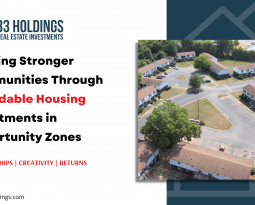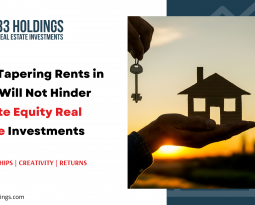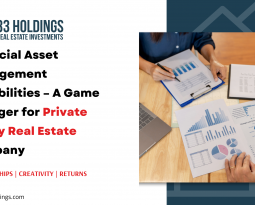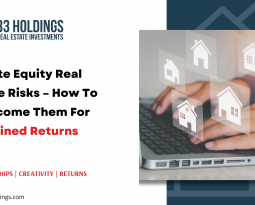Success measure for investments more often is about how wealth generation takes place with investment, yield, and other such financial metrics.
Any sustainable investments across an asset-class requires it to have an appropriate weightage to risk assessment, planning the timing of the investments among other factors to ensure they are secured and well hedged.
Private equity real-estate investments companies with vertical integration also try to rehabilitate or develop new properties, wherein the investments are targeted to generate high returns for the businesses.
Given the long term, risk adjusted return on investments, the private equity real estate segment has seen more activity and accruals than a lot of other asset classes in the economy.
According to Preqin, US funds have accumulated a record $287.8 billion for commercial real estate purchases. That is an 11% increase from a year ago and a 57% increase from the end of 2019.
Private equity investing in real estate is witnessing a significant rise, due to its popularity in generating higher returns, in comparison to some of the other asset classes. But private equity has a different level of risk than other asset classes because the investments are based on different practices.
Risks
Market risk – Market risks are integral to real-estate investments, and profoundly they can be classified as
- Regulatory risks
- Institutional investment-related risks (due to the size of investments, slippages, investment structure, etc.)
- Force Majeure Risks
Enterprise / Portfolio Risks
Each real estate company or property portfolio is imperative to deal with some internal and external set of risks. Such risks are taken by fund managers and the companies in which they invest to create alpha and outperform the competition.
These risks come from the strategic decisions and tactical requirements to deal with everyday aspects of dealing the business-like
- Business Risks
- Operational Risks
- Property Risks
Investors usually are concerned about the risks like investee/partner risk, project entitlement risk, and title risk that affect the dynamics of risk portfolio conditions.
These are nonsystematic risks that can be managed or spread out by making a portfolio of investments with different partners and properties.
Risks are an integral part of any portfolio management, and there is a need for businesses to have insights into the systematic and unsystematic risks implied for any set of investments. The industry is a level playing ground, and it is paramount for businesses to have its act together in dealing with the developments.
Choosing to take a plunge into the world of private equity real estate investments with 33 Holdings could help you as an investor to mitigate one or more of the risks and the level of threat each risk may bring on.
Some of our best practices towards risk mitigation are structured around the following areas of business
- Selection of properties for developments
- Location and Socio-economic research in the selection of the projects
- Benchmark practices and corporate governance standards compliance in dealing with business operations transparency
- Working on sustainable development practices for all infrastructure projects, leading to operational quality and performance delivery.
Our multi dexterous and cross skilled teams enable cost efficiencies, reduced slippages and an improved operational efficacy. This enables us as a private equity real estate company to adopt a high-power-performance approach resulting in enhancing operating profit margins, and the return on investment for the investors who have entrusted us with their corpus.
With 33 Holdings, as an investor can capitalize on new opportunities of private equity real-estate investments, and the journey towards a sustainable wealth generation.
To know more, call our investor relations team at 678.824.4508 for an in-person consultation.





